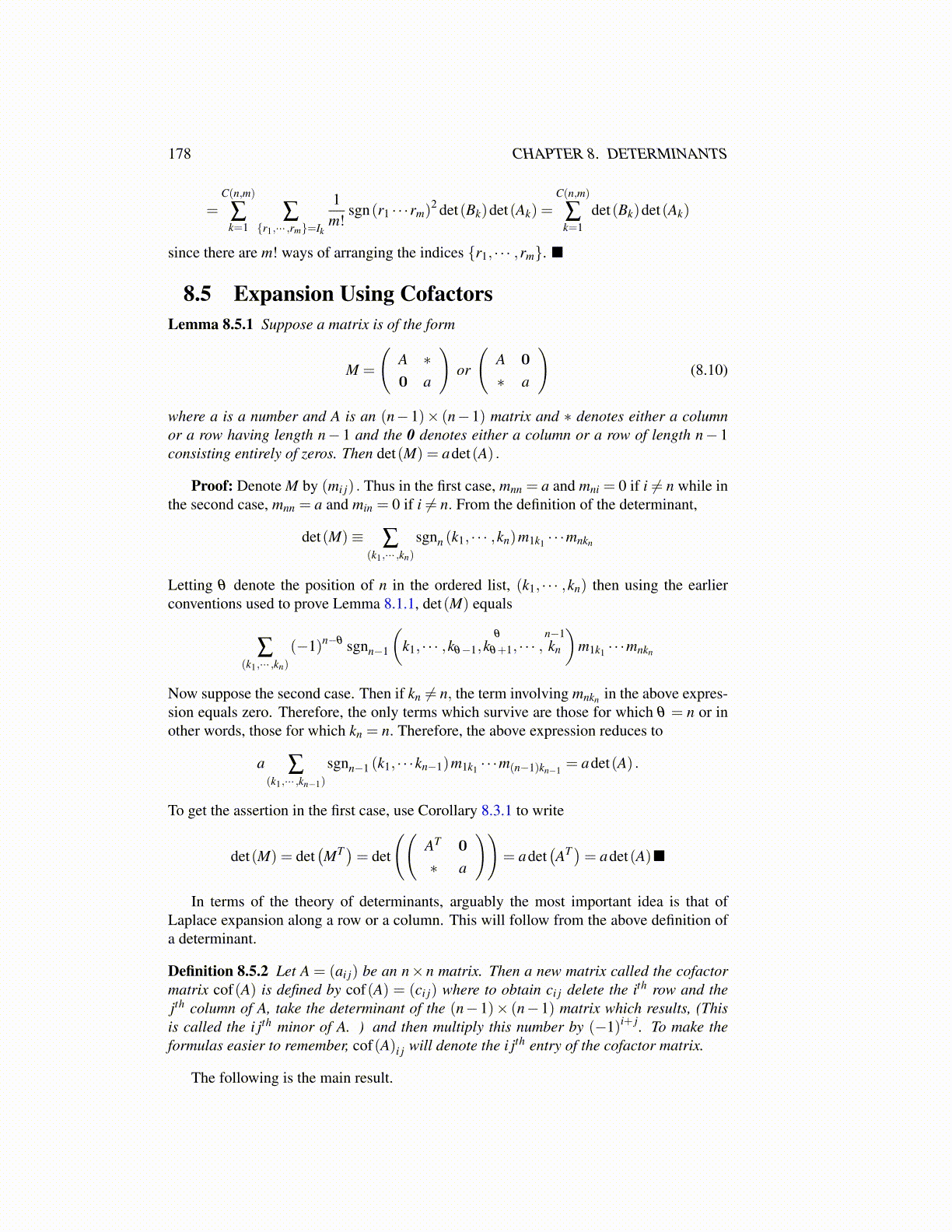
178 CHAPTER 8. DETERMINANTS
=C(n,m)
∑k=1
∑{r1,··· ,rm}=Ik
1m!
sgn(r1 · · ·rm)2 det(Bk)det(Ak) =
C(n,m)
∑k=1
det(Bk)det(Ak)
since there are m! ways of arranging the indices {r1, · · · ,rm}. ■
8.5 Expansion Using CofactorsLemma 8.5.1 Suppose a matrix is of the form
M =
(A ∗0 a
)or
(A 0
∗ a
)(8.10)
where a is a number and A is an (n−1)× (n−1) matrix and ∗ denotes either a columnor a row having length n− 1 and the 0 denotes either a column or a row of length n− 1consisting entirely of zeros. Then det(M) = adet(A) .
Proof: Denote M by (mi j) . Thus in the first case, mnn = a and mni = 0 if i ̸= n while inthe second case, mnn = a and min = 0 if i ̸= n. From the definition of the determinant,
det(M)≡ ∑(k1,··· ,kn)
sgnn (k1, · · · ,kn)m1k1 · · ·mnkn
Letting θ denote the position of n in the ordered list, (k1, · · · ,kn) then using the earlierconventions used to prove Lemma 8.1.1, det(M) equals
∑(k1,··· ,kn)
(−1)n−θ sgnn−1
(k1, · · · ,kθ−1,
θ
kθ+1, · · · ,n−1kn
)m1k1 · · ·mnkn
Now suppose the second case. Then if kn ̸= n, the term involving mnkn in the above expres-sion equals zero. Therefore, the only terms which survive are those for which θ = n or inother words, those for which kn = n. Therefore, the above expression reduces to
a ∑(k1,··· ,kn−1)
sgnn−1 (k1, · · ·kn−1)m1k1 · · ·m(n−1)kn−1 = adet(A) .
To get the assertion in the first case, use Corollary 8.3.1 to write
det(M) = det(MT )= det
((AT 0
∗ a
))= adet
(AT )= adet(A)■
In terms of the theory of determinants, arguably the most important idea is that ofLaplace expansion along a row or a column. This will follow from the above definition ofa determinant.
Definition 8.5.2 Let A = (ai j) be an n× n matrix. Then a new matrix called the cofactormatrix cof(A) is defined by cof(A) = (ci j) where to obtain ci j delete the ith row and thejth column of A, take the determinant of the (n−1)× (n−1) matrix which results, (Thisis called the i jth minor of A. ) and then multiply this number by (−1)i+ j. To make theformulas easier to remember, cof(A)i j will denote the i jth entry of the cofactor matrix.
The following is the main result.